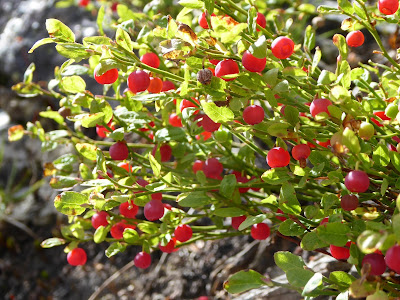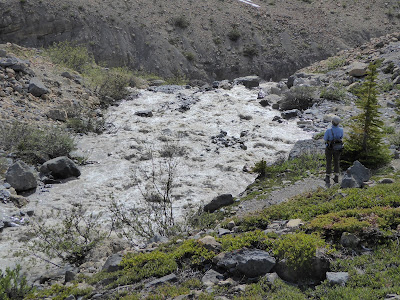 |
| Mountain Forms, Lawren Harris |
Ninety years ago, in 1926, Lawren Harris painted his iconic
Mountain Forms just down the road from us along the Sawback Range. One week ago, this same painting sold at auction for over $11 million, smashing the price record for any Canadian piece of art. It got us thinking about art in the Canadian Rockies, and it turns out the story of the previous record holding painting has a connection to both Lake Louise and Lawren Harris.
 |
| Lake Agnes, Above Lake Louise, Rocky Mountains, Lawren Harris |
If you're unfamiliar with Lawren Harris, he was one of the founders of the celebrated artists collective,
the Group of Seven. They transformed Canadian landscape painting in the early 20th century, and several members of the group came to the Rockies to paint. Harris' works are particularly brilliant and luminous, and we love them, as they convey what it
feels like to be in the mountains. His painting
Lake Agnes, Above Lake Louise, Rocky Mountains puts us right up there on the mountainside.
In this work, you can see Mount Lefroy in the distance, and it turns out that the former record-holding Canadian painting is called
Scene in the Northwest: Portrait of John Henry Lefroy, painted by Paul Kane. Lefroy was an British administrator, but also a top-rank scientist. When he was posted to Toronto in 1842 to run a new magnetic observatory, he launched an expedition into the hinterland of Canada to measure geo-magnetic activity all the way to the Arctic Circle. The goal was to locate the North Magnetic Pole. In 1843 and 1844, he travelled more than 8,000 kms to perform his measurements.
 |
| Scene in the Northwest: Portrait of John Henry Lefroy, Paul Kane |
Kane made the painting after Lefroy returned from the expedition, and then Lefroy took it home with him when he returned to England in 1853. Here the story gets really interesting. Wikipedia picks up the rest:
“The original painting remained in the Lefroy family for some 150 years, but they had no knowledge of the artist or its value. It was forgotten in Canada until researchers at the Library and Archives Canada and the Art Gallery of Ontario learned of its existence and located it in the possession of one of Lefroy's descendants. They opted to put it up for auction in 2002. It sold at auction in February 2002 at Sotheby's Canada in Toronto for
$5 million. The painting was appraised at $450,000 to $550,000, but a competitive auction vastly exceeded its appraised value.”
 |
| Mount Lefroy, Lawren Harris |
As a final chapter to this story of top-value Canadian art with Rocky Mountain connections, we leave you with this reproduction of one of Lawren Harris' most famous paintings,
Mount Lefroy. You can see the real Mount Lefroy next summer if you join us on a guided hiking trip to the Plain of Six Glaciers. We hope to see you on the trail!


















































